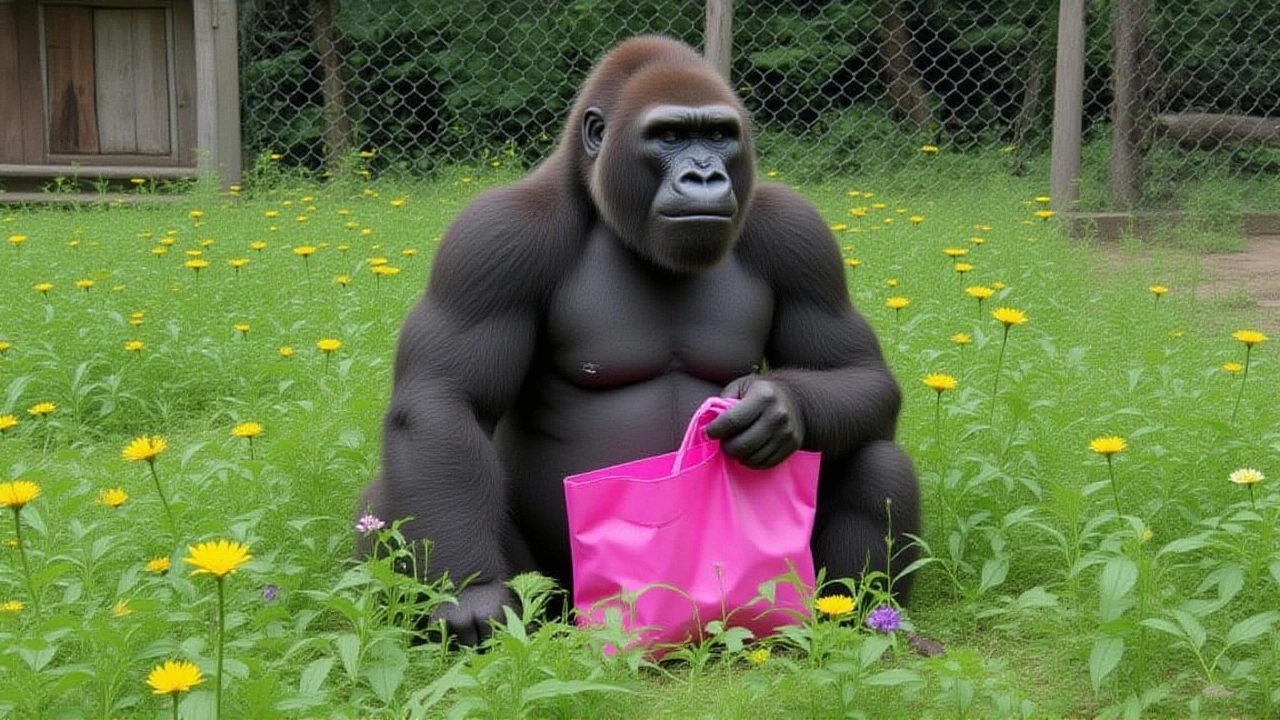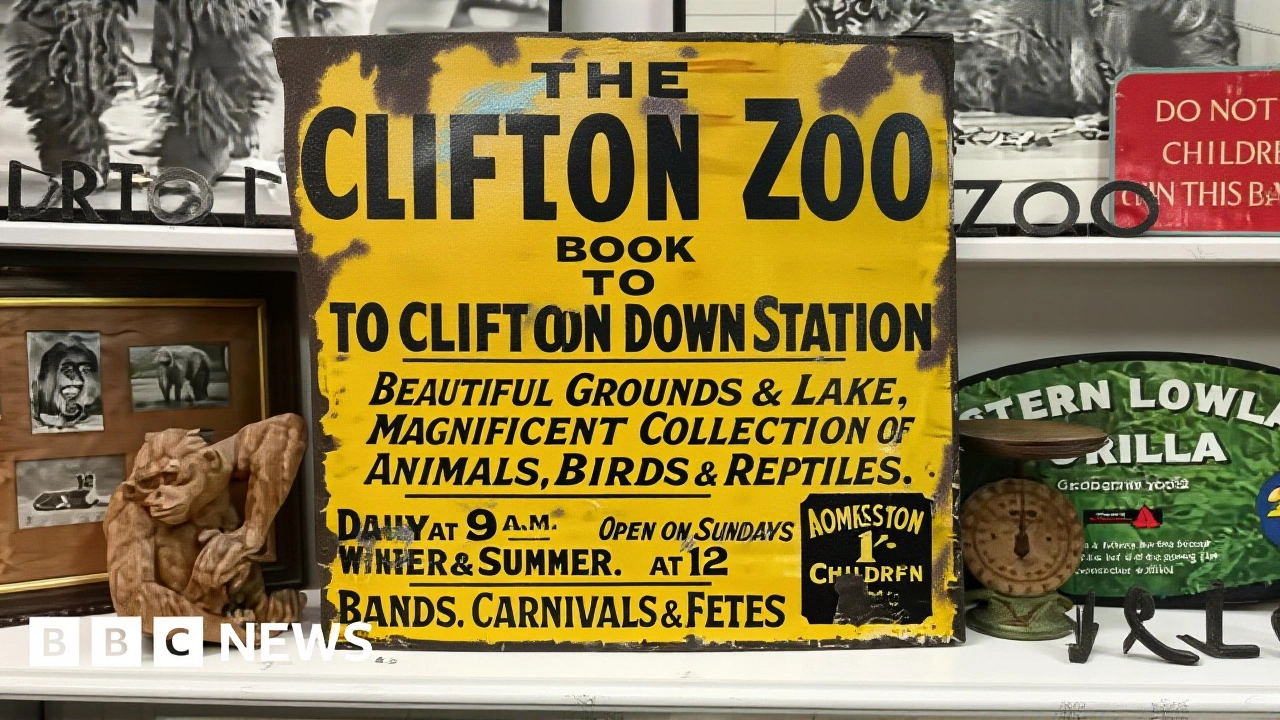When Bristol Zoological Society staged a series of memorabilia auctions in November 2024, the charity pulled in a historic £206,600 for its conservation programmes.
The money came from three separate events, the headline being a seven‑hour online auction on . Over 300 items that once lived on the former Bristol Zoo Gardens site in Clifton were offered to bidders worldwide.
Background: From Clifton’s Historic Zoo to a New Conservation Hub
Founded in 1836, Bristol Zoo Gardens was one of Britain’s oldest public zoos. After 186 years the doors at its Clifton location shut in September 2022, a decision announced back in 2020 as the society prepared to relocate its animal collection to the re‑branded Bristol Zoo Project near M5 Junction 17. The closure sparked a wave of nostalgia and, crucially, a huge stockpile of historic artefacts – everything from Victorian benches to Edwardian signage.
To keep that legacy alive while funding the next chapter, the society turned to a carefully curated auction series, partnering with local auction house Auctioneum Ltd. The plan was simple: sell items that told the zoo’s story, and pour the proceeds straight into new‑world conservation work.
Details of the November Auctions
The fundraising splash began on with a gala dinner and live auction that netted £20,000. The centerpiece, however, was the online event on the 22nd, hosted by Andrew Stowe, Associate Director of Auctioneum Ltd. Stowe told bidders, “It’s a real honour to be hosting these auctions on behalf of Bristol Zoological Society… Anyone who ever visited Bristol Zoo Gardens will see something they remember.”
Highlights included an Edwardian sign that once advertised the zoo inside Bristol Temple Meads railway station (£16,000) and a bronze bust of the beloved gorilla Alfred (£9,000). The auction clock ticked for almost seven hours, and the final tally hit £161,600.
Just days later, a niche auction of 45 ornate Victorian benches fetched an extra £25,000. Those benches, originally scattered across the Clifton grounds, now fund almost a full year of the society’s Madagascar programme protecting the blue‑eyed black lemur.
Reactions from Organisers and Supporters
Stowe’s remarks captured the mood: “All of the items tell stories and share a narrative through our collective social history.” A spokesperson for the society added, “It has been wonderful to watch these auctions and see people celebrating our long history while helping us fund our future conservation work.”
Donors ranged from local families who grew up feeding the giraffes to overseas wildlife enthusiasts. One bidder from New York wrote, “Owning a piece of Clifton feels like I’m still part of the community, even though I’ve never set foot there.”
Impact on Conservation Projects
The £206,600 will be earmarked for three main buckets:
- Construction of the new conservation zoo at the Bristol Zoo Project, including state‑of‑the‑art habitats for endangered species.
- Expansion of the Madagascar programme, notably the blue‑eyed black lemur reserve, where the bench auction money covers roughly 12 months of field‑work costs.
- Global education outreach, funding curricula that reach over 5,000 schools across the UK and Africa each year.
These funds come at a critical juncture, as the society seeks to replace the lost revenue from ticket sales after the Clifton closure.

Opposition and Future Plans
Not everyone cheered. A small coalition of heritage campaigners argued that artefacts should remain in situ until the former zoo site is officially sold for development. They staged a petition that gathered 2,300 signatures, warning that “selling history fragments the narrative of Clifton’s cultural landscape.”
In response, the society displayed a transparent plan: a specialist archivist catalogued every high‑value piece, storing many in the Bristol City Council archives. Select items will be showcased at the upcoming permanent free history exhibition inside the Bristol Zoo Project and at the Clifton Conservation Hub.
Looking ahead, the society aims to complete the sale of the former Clifton property by early 2025, using any remaining proceeds to further bolster the new conservation hub. Meanwhile, the success of the auctions has sparked talk of a recurring “heritage night” each autumn, giving collectors fresh opportunities to support wildlife while preserving Bristol’s past.
Key Facts
- Total raised: £206,600
- Primary auction date: 22 Nov 2024
- Number of items sold: 300+ (including 45 benches)
- Top‑selling pieces: Edwardian railway sign (£16k), Alfred the gorilla bust (£9k)
- Beneficiary programmes: Bristol Zoo Project construction, Madagascar lemur conservation, education outreach
Frequently Asked Questions
How will the auction proceeds support the new Bristol Zoo Project?
The £206,600 will fund key infrastructure at the new conservation zoo, such as habitat enclosures for endangered species, and will finance the ongoing construction schedule slated for completion in 2026.
What happened to the animals after the Clifton zoo closed?
Most of the resident animals were relocated to the re‑branded Bristol Zoo Project, which opened its doors in 2023. Species ranging from red pandas to African elephants now live in purpose‑built habitats at the new site.
Why were Victorian benches included in a separate auction?
The benches are iconic pieces of Clifton’s parkland design. By auctioning them separately, the society could target donors interested in heritage objects while dedicating that specific revenue stream to the Madagascar lemur programme.
What objections did campaigners raise about the sales?
Heritage groups argued that selling memorabilia before the Clifton site’s final sale would dilute the cultural context of the artefacts. They called for a moratorium until the land’s future was settled, citing concerns over historic integrity.
Will the public be able to see any of the auctioned items?
Yes. Selected pieces will be displayed in a free, permanent exhibition at the Bristol Zoo Project and at the Clifton Conservation Hub, ensuring the community retains access to its zoo heritage.
